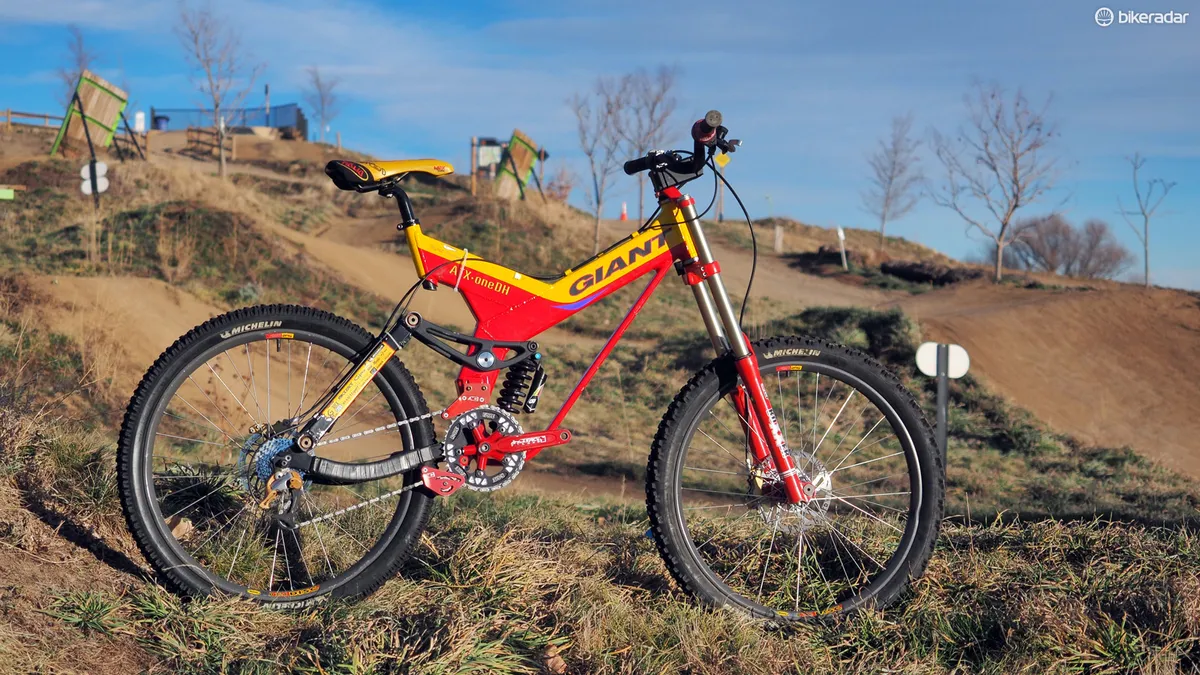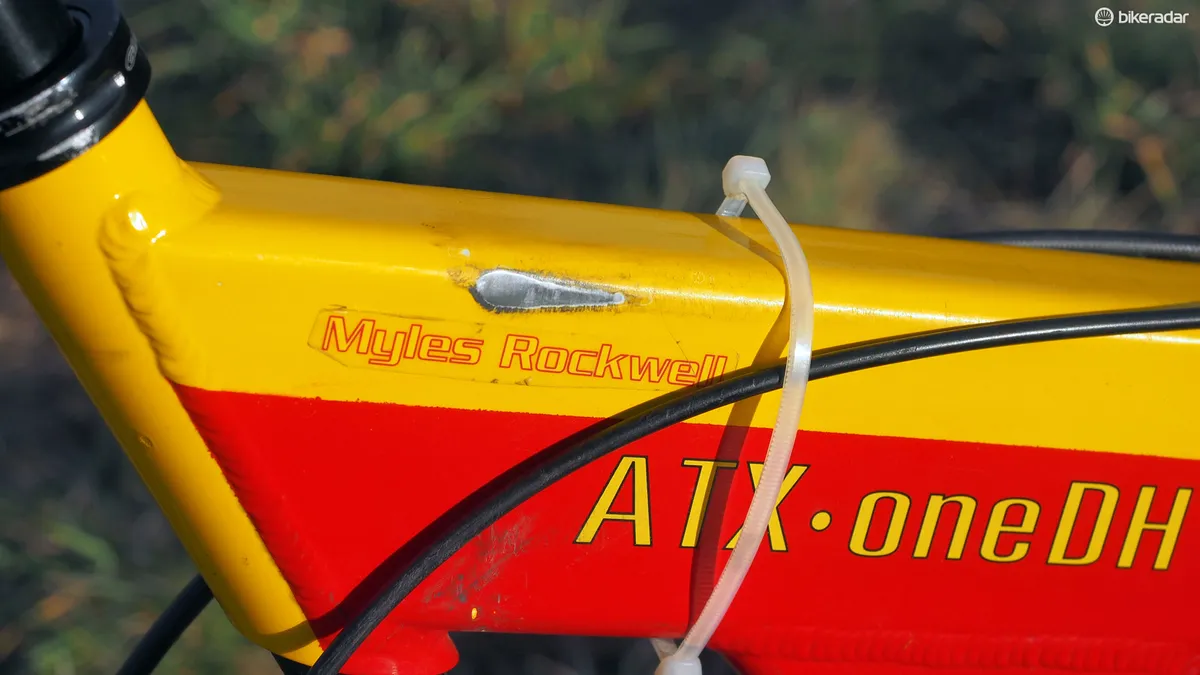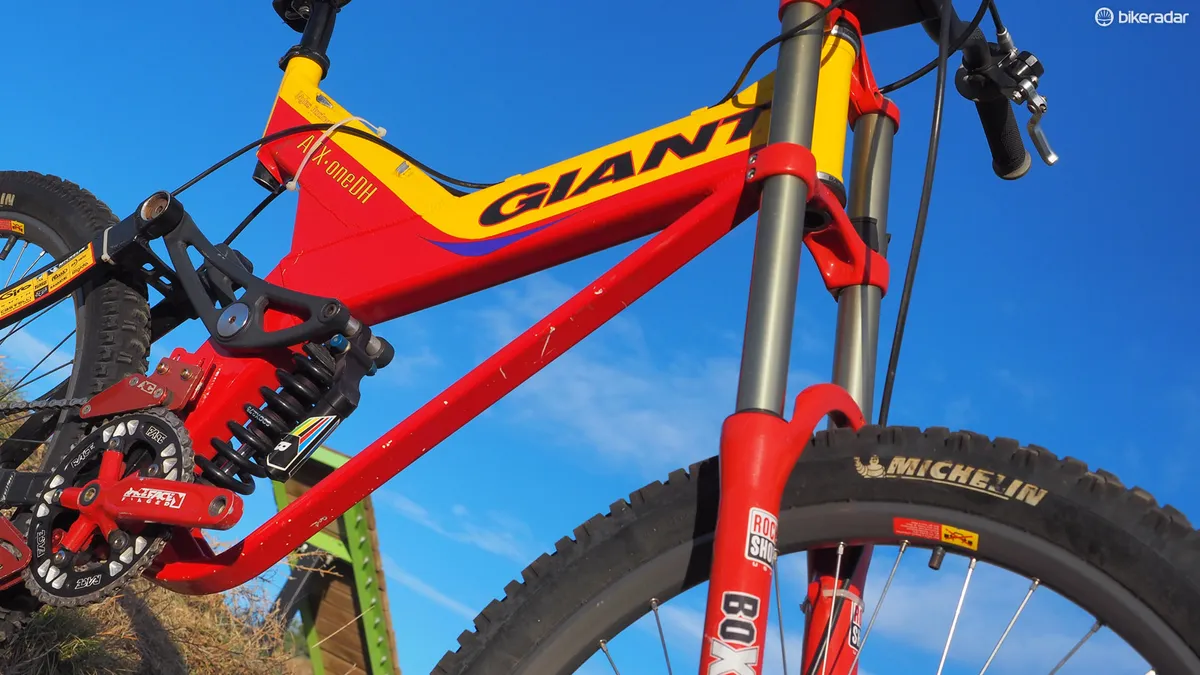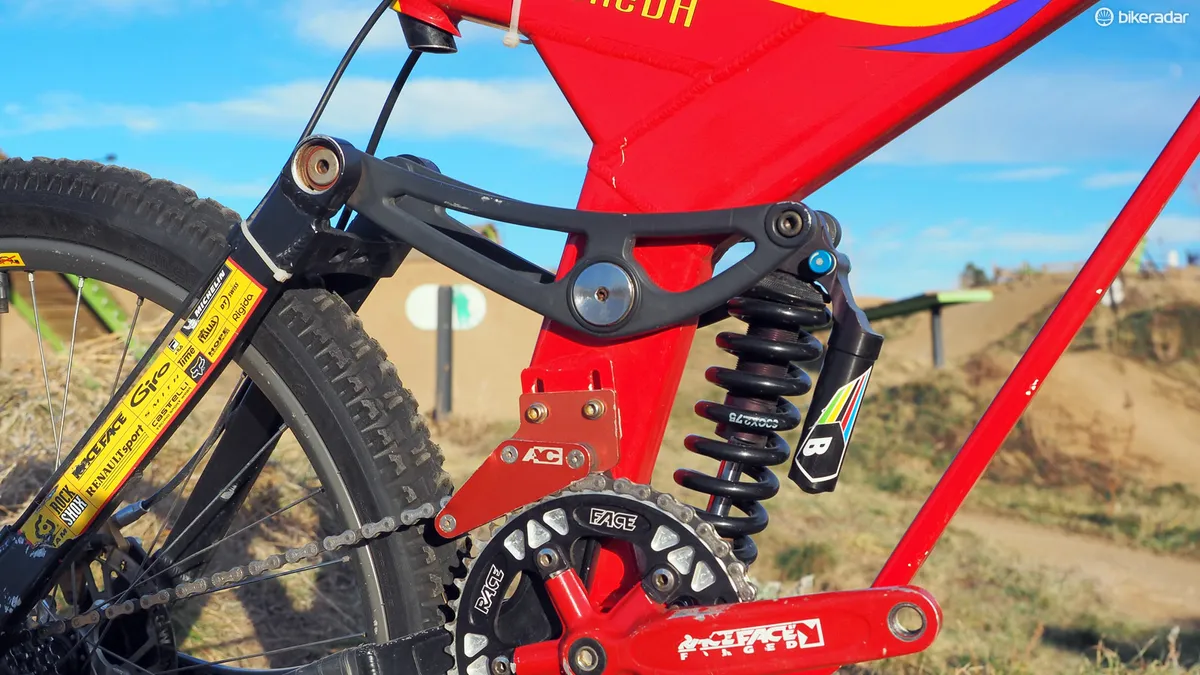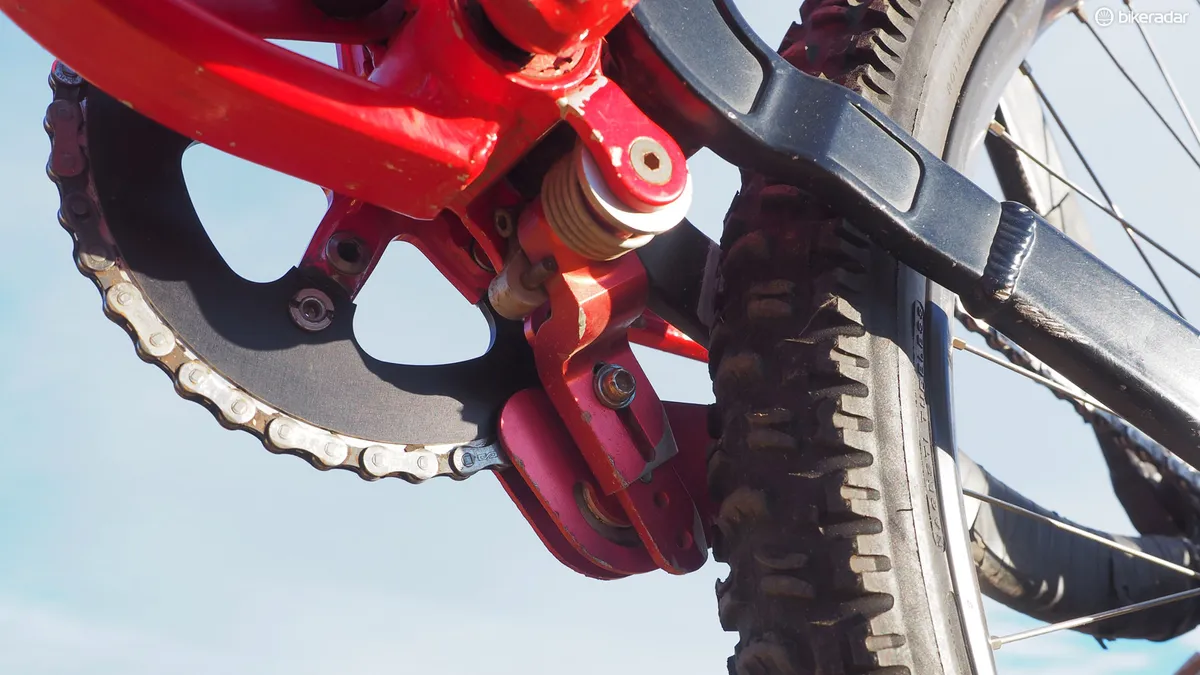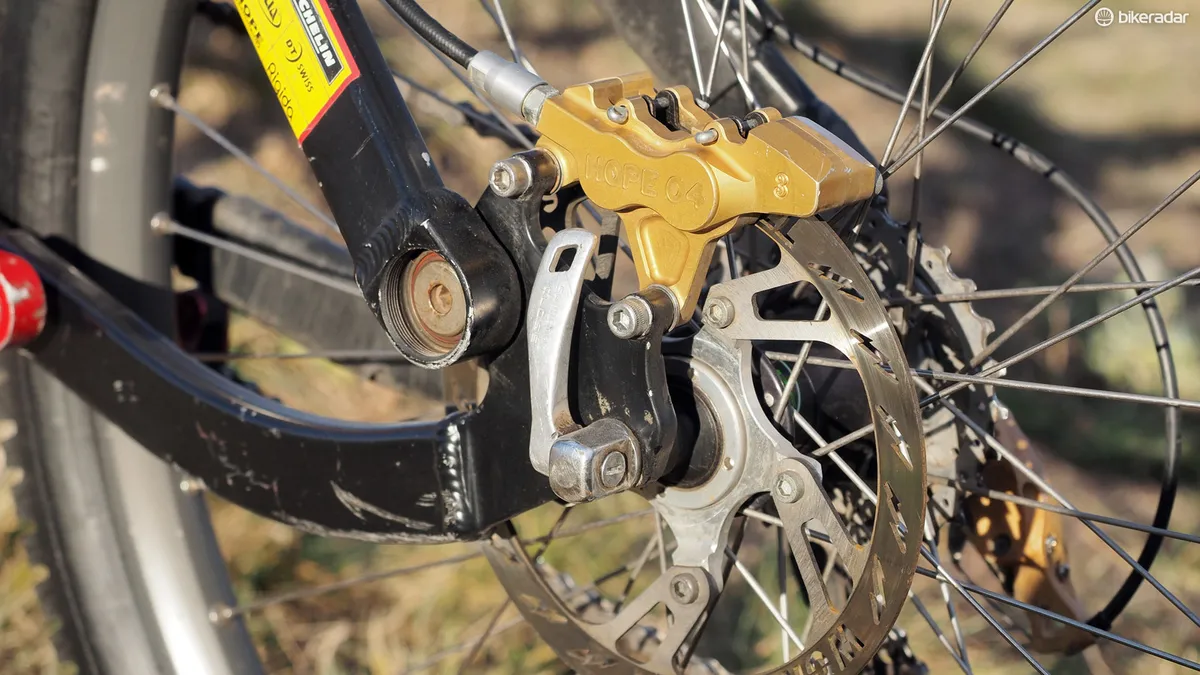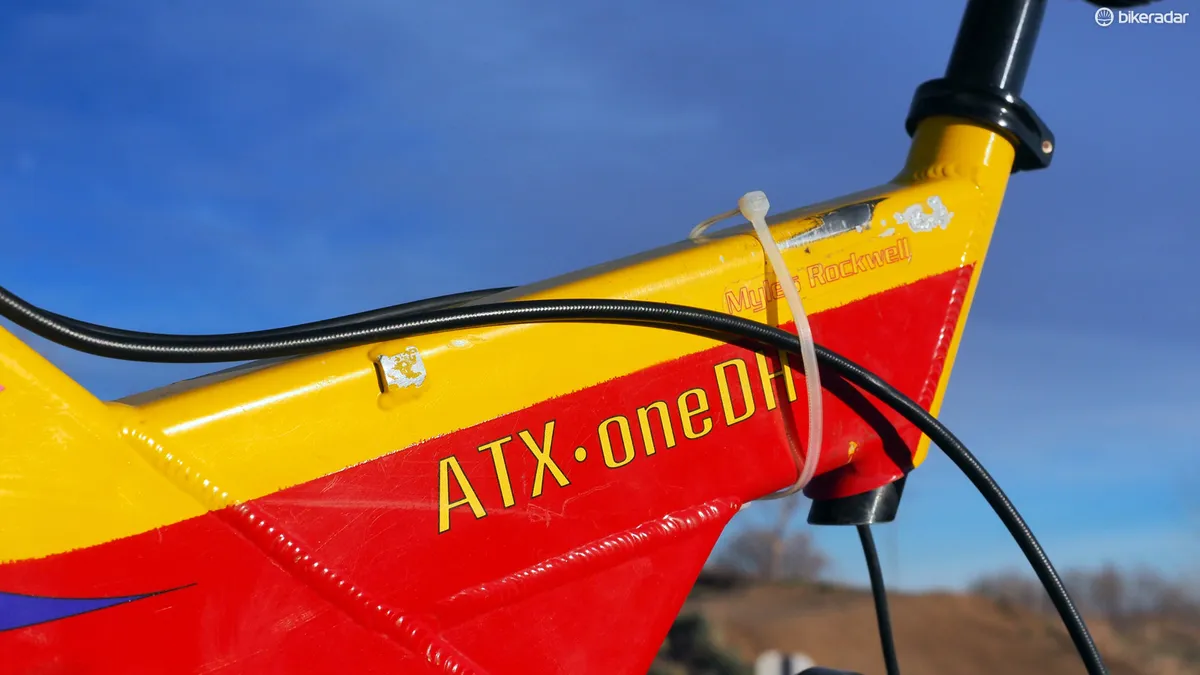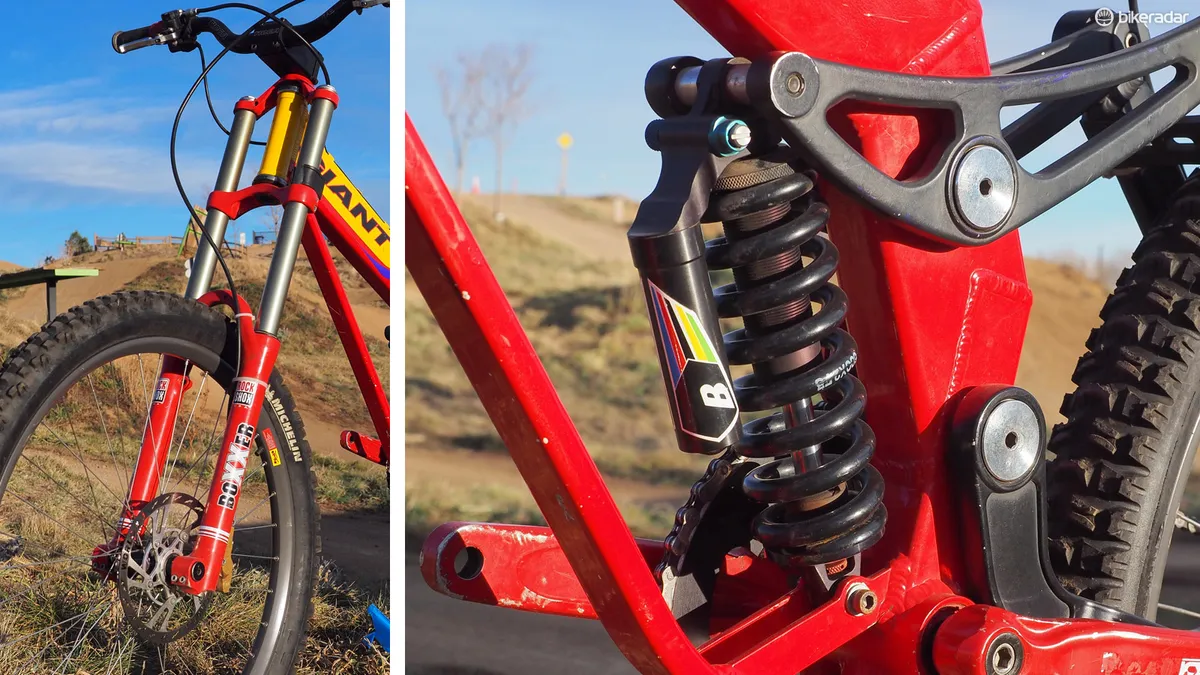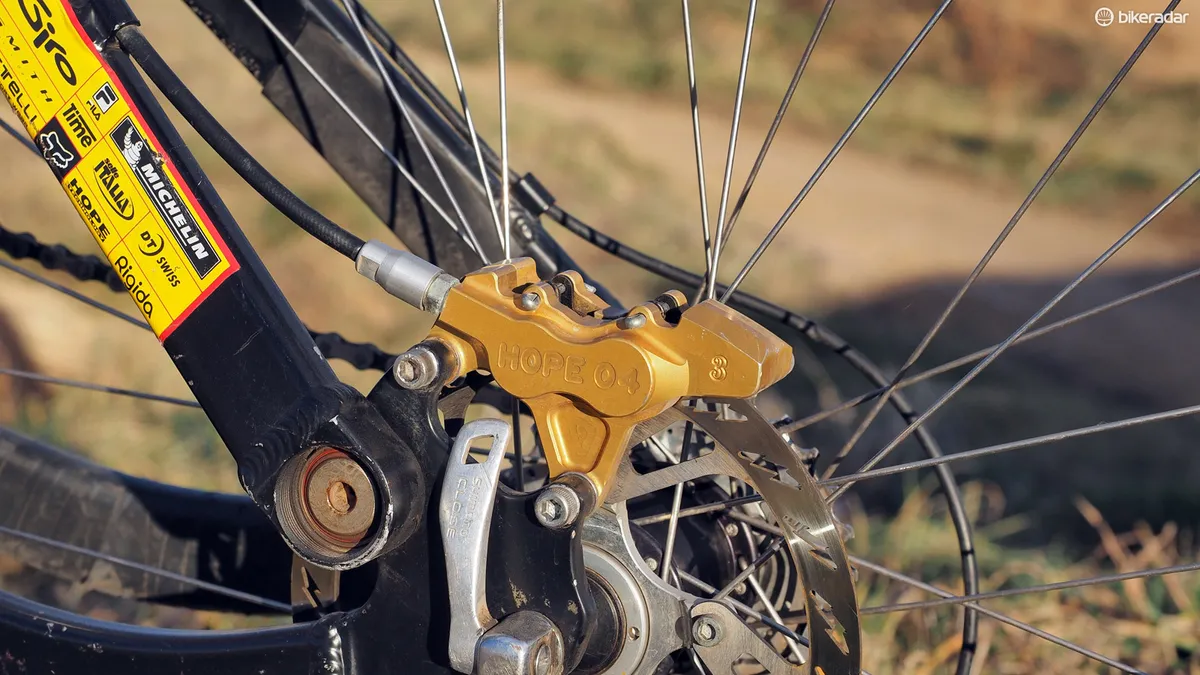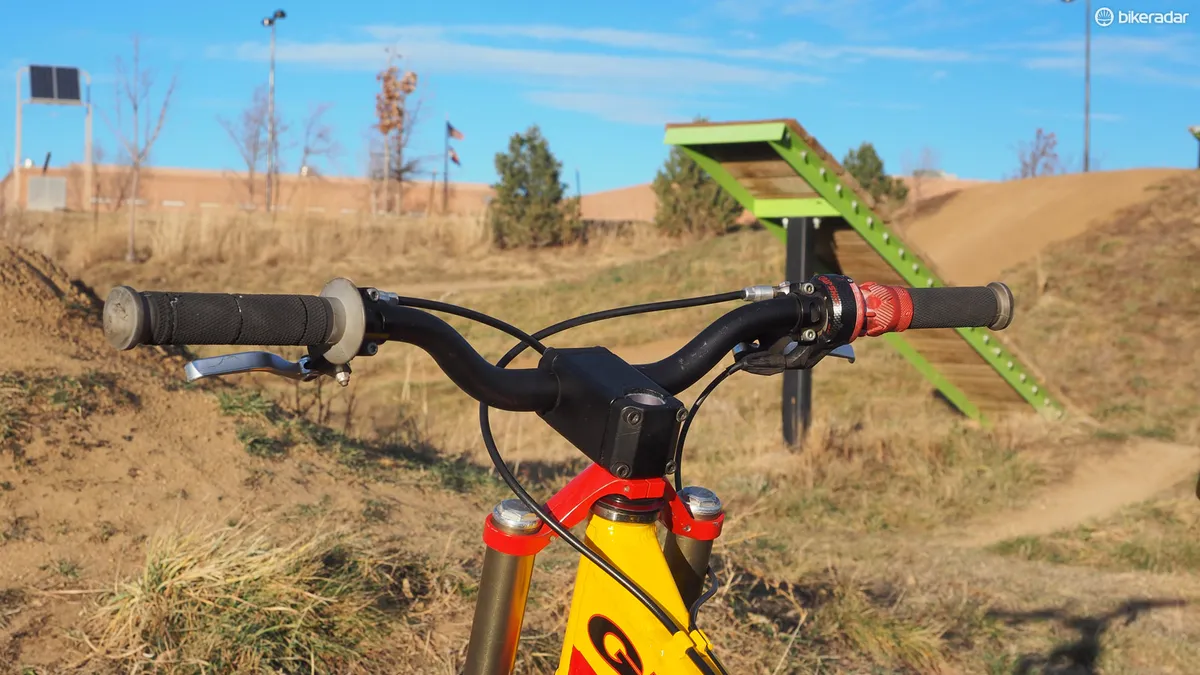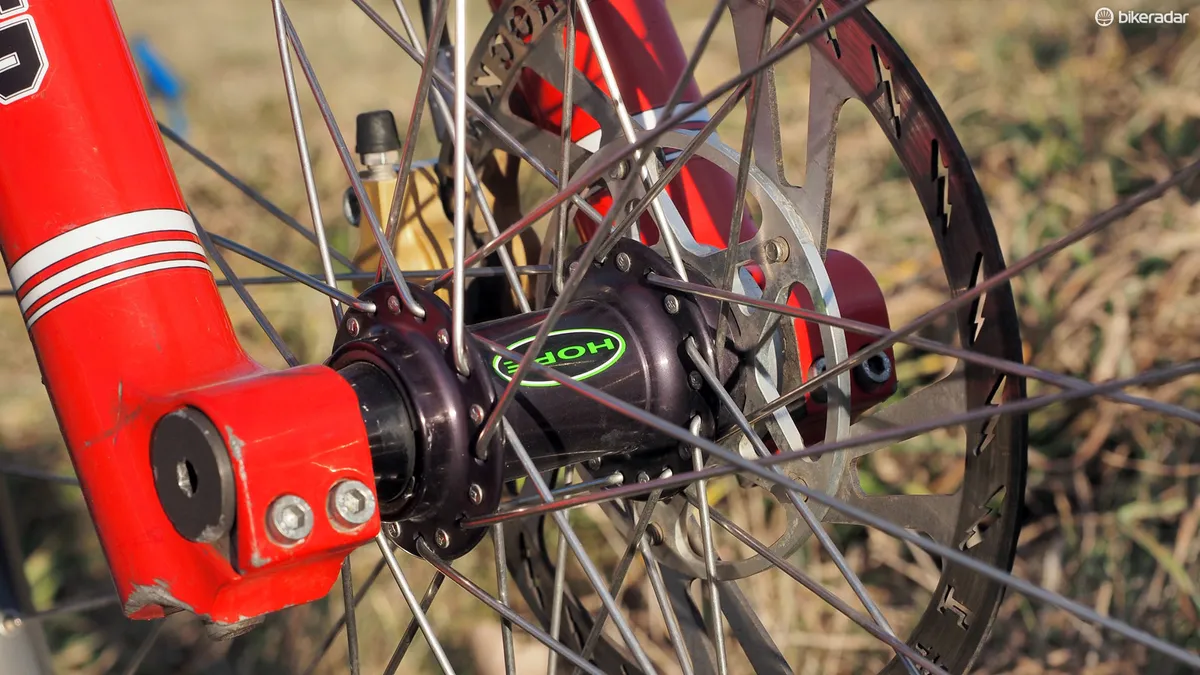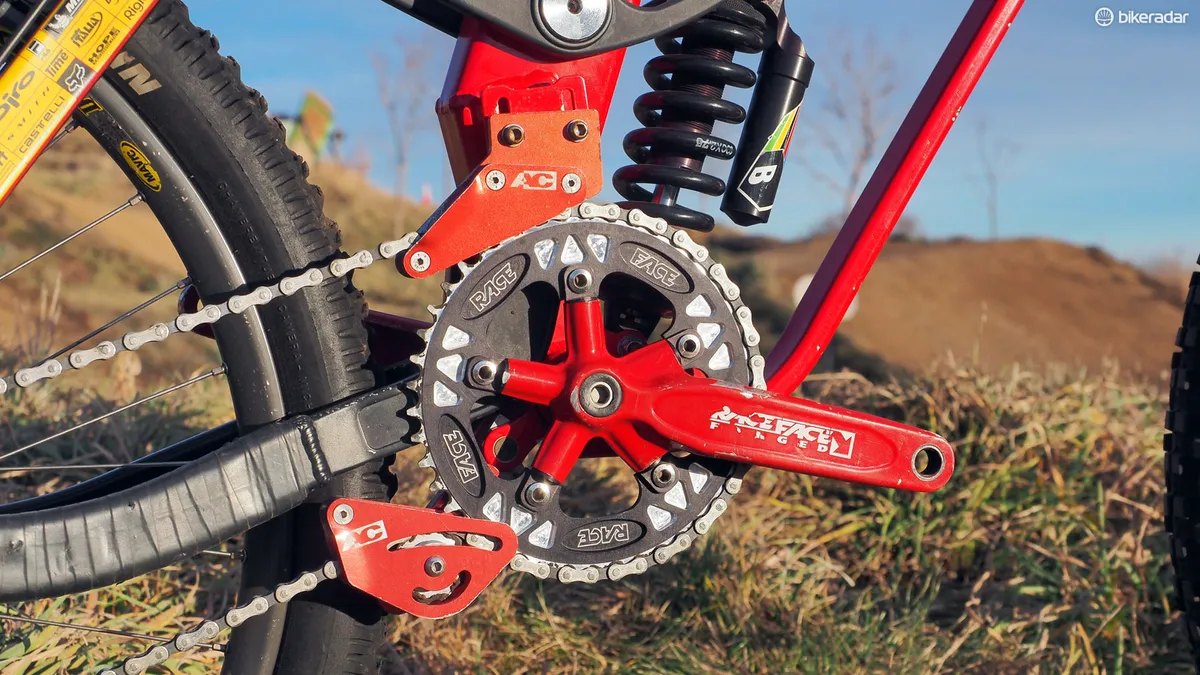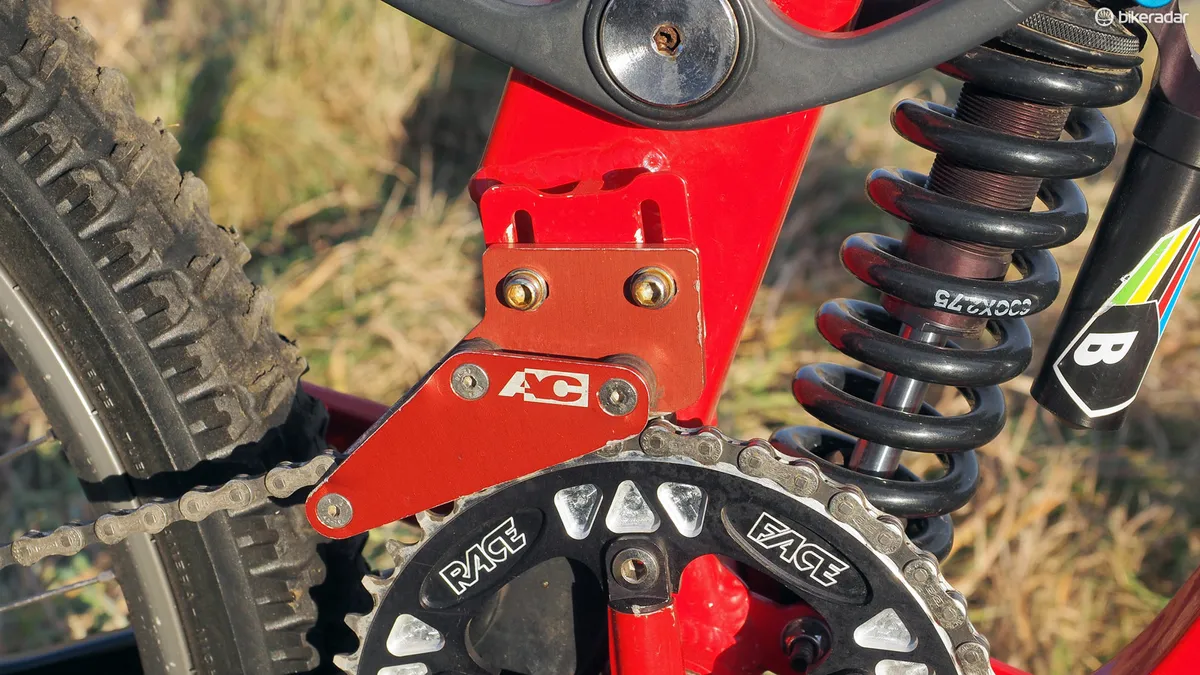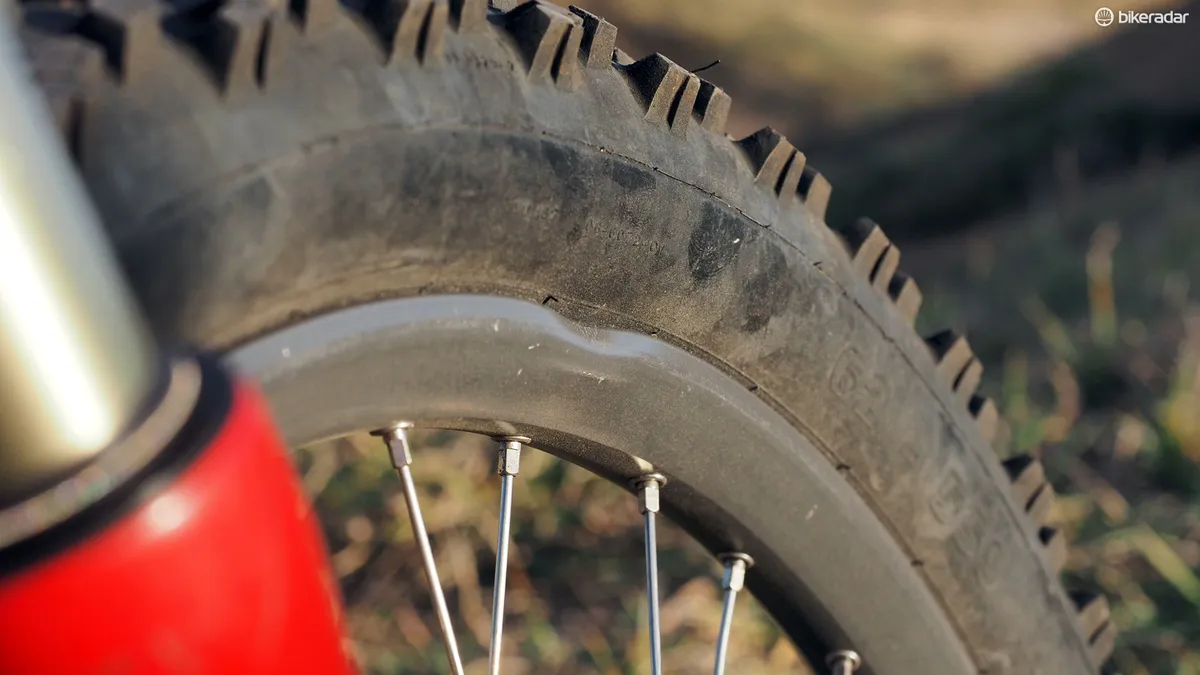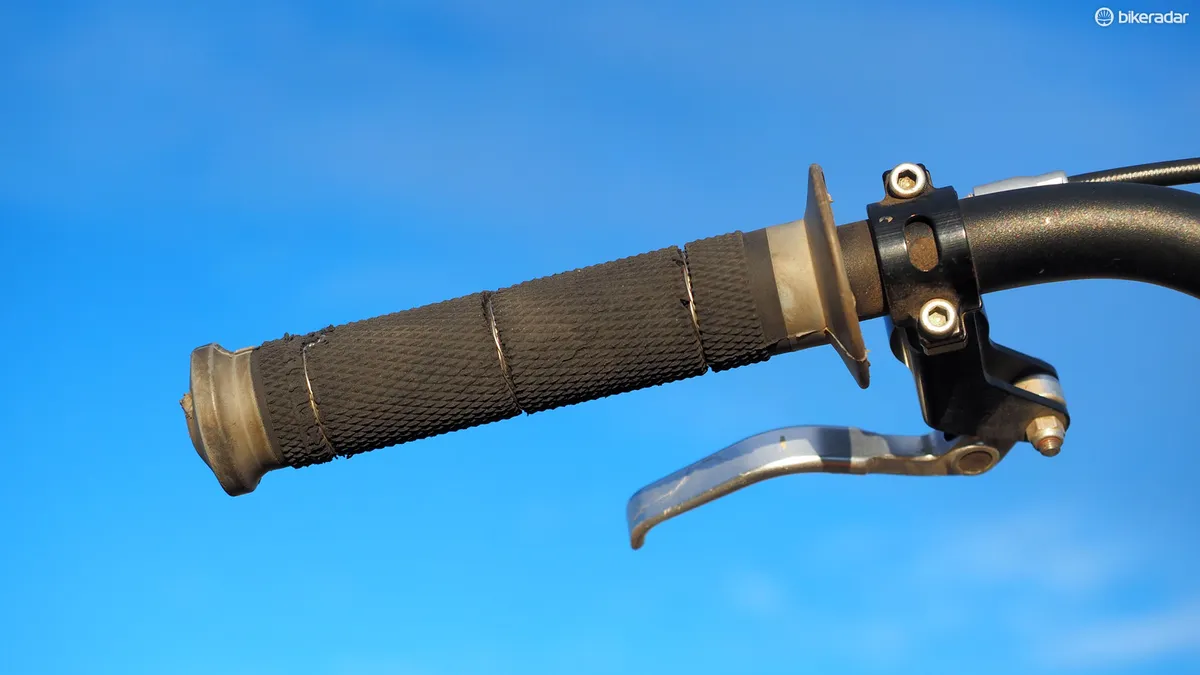By the start of the new millennium, downhill racing had undergone a lot of changes from its very early days – at least in terms of equipment. While the courses were still comparatively non-technical, the bikes were now being purpose-built for the task at hand. Modern racers might look with mouths agape at what was used at the time, but in 2000 Giant's then-radical ATX one DH was more than good enough to help American racer Myles Rockwell bring home a rainbow jersey.
A glance at the Giant's geometry lays out plainly just how much downhill bikes have evolved. Whereas modern machines are unquestionably long, low, and slack, Rockwell's 8in-travel Giant was distinctly short and high. The head tube angle was reasonably slack at 66 degrees, but the wheelbase measures just 1,130mm (44.5in) and the bottom bracket is a mighty 395mm (15.5in) off the ground. For the sake of comparison, Giant's latest Glory 27.5 downhill bike has the same amount of rear wheel travel but is about 140mm (5.5in) longer, 60mm (2.4in) lower, and three degrees slacker at the head tube.
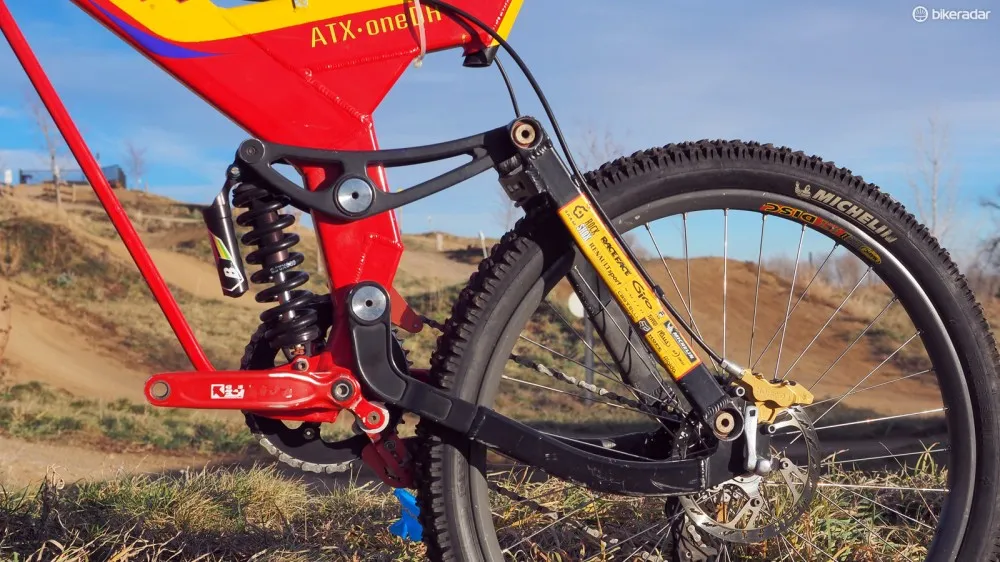
Add in the very high speeds for races at the time and Rockwell's 1.91m (6ft 3in) height and you've got a recipe for instability. As luck would have it, however, that tendency to slide on loose surfaces played well not only to the tracks that were used at the time but also to how Rockwell grew up riding in Marin County, California – and his distinctive 'foot out, flat out' riding style.
"That skill was something I brought in from a lot of old-school style stuff when you were racing on more raw, unprepared surfaces in California summertime – really loose and rocky and sketchy with no groove. That was the kind of stuff that I had to practice on," Rockwell said. "The bicycle and the riding style back in the day kind of went hand in hand. Back in the day when the bikes were really sketchy, that foot-out style was kind of mandatory for me. There's a place for it still, but it's fewer and farther between now. Even toward the end of my career, it was much less common for there to be the right situation. That type of high-speed corner with no ruts is now a distant memory."
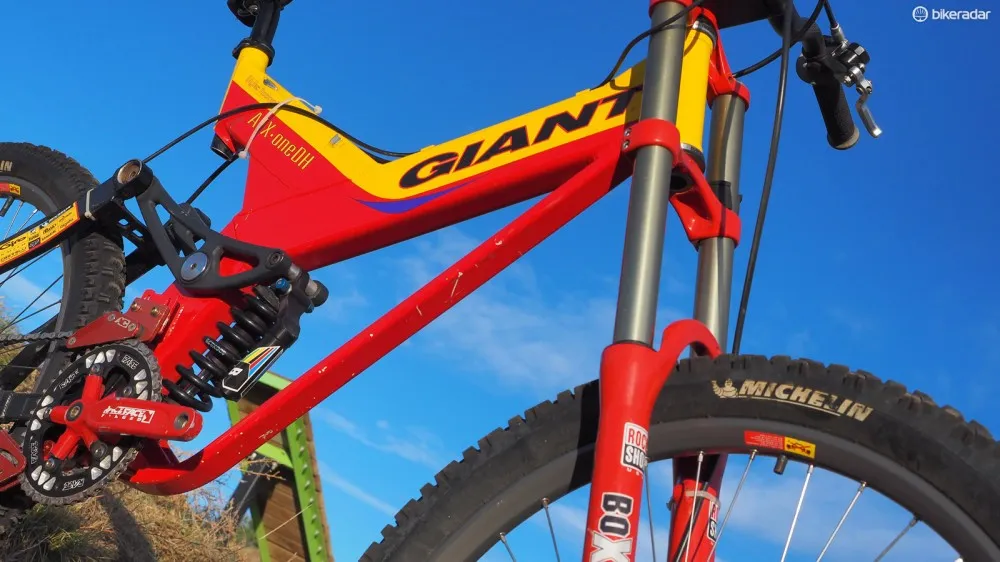
That isn't to say that companies weren't trying to push the envelope at the time, and Rockwell's bike features some decidedly forward-looking features. The Mavic D321 Disc rims, for example, would be considered wide even by modern standards with their 29mm internal width. Stopping power came courtesy of Hope hydraulic disc brakes with massive four-piston calipers that clamped down on custom-cut rotors (albeit rather small ones at 185/160mm, front and rear). And even back then, the suspension was being wholly custom tuned and built by RockShox's elite BlackBox program.
"There was more potential for adjustment and more oil volume – things that really became the norm later," said Rockwell. "At one point in 2000, there was a guy named Dirk who came in for an internship for his engineering degree. He set us up with telemetry and had been trying to talk me into making a spring change. I was too set on a stiff spring setup because I didn't really like the way those eight-inch bikes were undulating so much. It didn't feel how I wanted it to efficiency-wise and in terms of responsiveness so I was always trying to keep it kind of tight. I was very rarely using all of the travel."
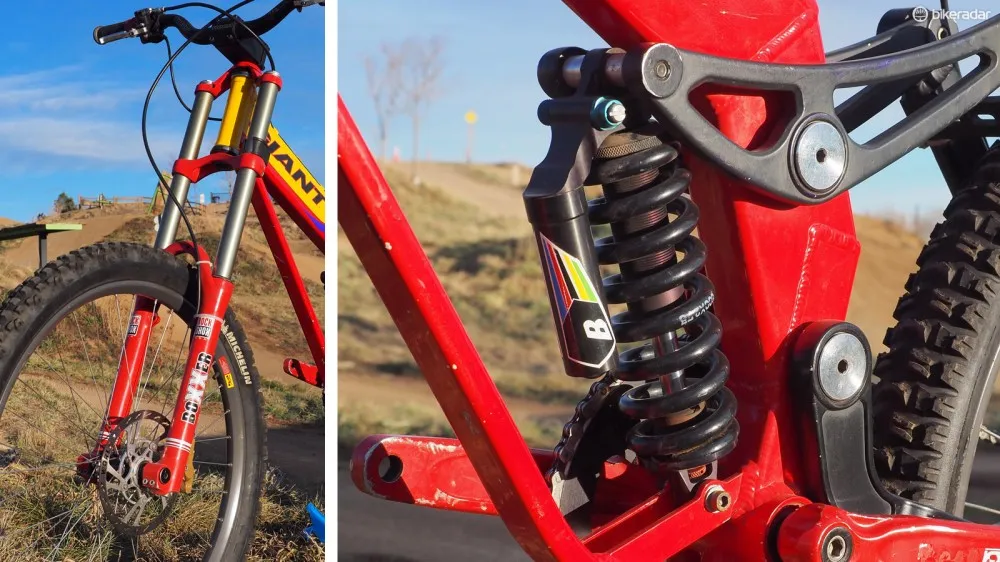
"I finally took his advice going into the Worlds and agreed with him that I would try a different setup. I always thought that I knew everything but I really didn't, and having somebody there to help me a little bit made a big difference for me. It probably helped me win the Worlds that year."
One of the biggest differences between new and old, though, is weight. Cutting-edge carbon fiber flagship bikes these days can easily come in under 15.5kg (34lb). In comparison, Rockwell's aluminum-intensive rig is positively leaden. The bare frame-plus-rear shock is roughly 5kg (11lb) and each rim is nearly 700g. All totaled, the complete bike is a whopping 19.11kg (42.13lb) – and that's without the weighty Shimano SPD pedals he used at the time.
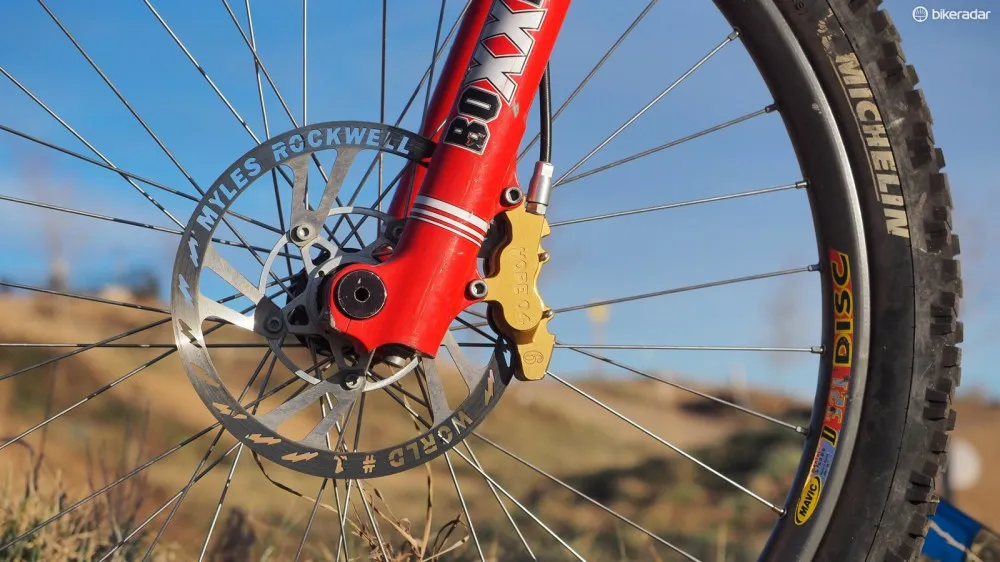
Rockwell retired from competition in 2002 at the ripe young age of 30, but he certainly hasn't walked away from the sport entirely. He recently acted as a "rider liaison" to champion downhiller Aaron Gwin (Trek Factory Racing). Rockwell also won the inaugural Red Bull Road Rage event in 2005, and even revisited his old stomping grounds with a second-place finish at the Legends of the Kamikaze downhill race this past September at Mammoth Mountain, California.
Rockwell says he mostly just rides for fun these days, however, but he's still available for skills coaching. Interested parties can contact him at myles@mylesrockwell.com.
Special thanks to the folks at The Pro's Closet, who will soon open up a museum of noteworthy vintage bikes at their headquarters in Boulder, Colorado.
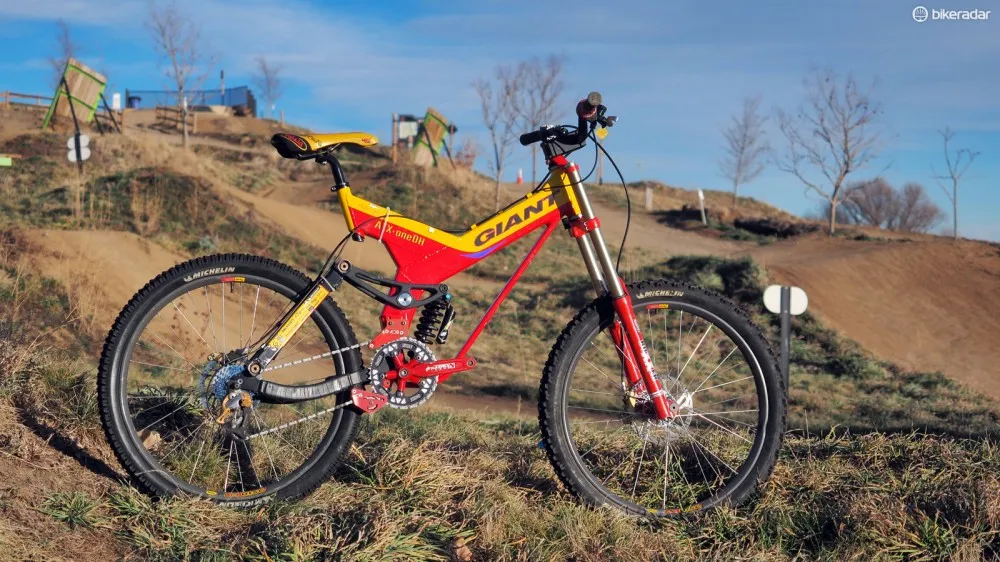
Complete bike specifications
- Frame: 2000 Giant ATX DH
- Rear shock: RockShox BlackBox
- Fork: RockShox Boxxer BlackBox
- Headset: Race Face Real Seal DH, 1 1/8in
- Stem: Tioga Cube DH 286, 70mm x 0°
- Handlebars: Tioga 286 DH High Rise, 680mm
- Tape/grips: ODI Ruffian
- Front brake: Hope DH4 hydraulic disc with custom "Myles Rockwell World #1" 185mm rotor
- Rear brake: Hope DH4 hydraulic disc with custom "Myles Rockwell World #1" 160mm rotor
- Brake levers: Hope Pro
- Chain guide: AC Components
- Rear derailleur: SRAM ESP 9.0SL Woody edition
- Shift lever: SRAM Grip Shift ESP 9.0SL
- Cassette: Shimano Deore XT CS-M737, 11-28T
- Chain: Sachs PC-61
- Crankset: Race Face North Shore DH, 170mm, 44T chainring
- Bottom bracket: Race Face
- Pedals: n/a
- Front rim: Mavic D321, 36h
- Rear rim: Mavic D321, 36h
- Front hub: Hope Bulb, 36h
- Rear hub: Hope Bulb, 36h
- Spokes: DT Swiss Competition 14/15g double butted, 3x, brass nipples
- Front tire: Michelin DH32, 26x2.8in
- Rear tire: Michelin DH24, 26x2.5in
- Saddle: Selle Italia Max Flite
- Seatpost: Kalloy
- Weight: 19.11kg (42.13lb, without pedals)
